Dogged by Inheritance
I find myself wondering sometimes what we have really done to our oldest and most loyal animal companions. Some dogs are now barely even recognisable as canine through our manipulation of their gene pool. 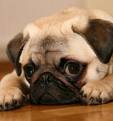 We are so used to seeing them like this that we don’t even question their authenticity as ‘dog’ but I distinctly recall thinking not so long ago, as I pondered a Pug, how almost human looking and childlike in behaviour it seemed. In effect all that had happened to it was that its once long muzzle had been shortened to the extent that it ran the risk of almost suffocating on its elongated soft palate and its eyeballs barely had room to sit inside their sockets. Despite all that, however, I remember thinking how endearing it seemed and behaved and completely understood why a client of mine used to refer to his ‘Pug-Adonis’.
We are so used to seeing them like this that we don’t even question their authenticity as ‘dog’ but I distinctly recall thinking not so long ago, as I pondered a Pug, how almost human looking and childlike in behaviour it seemed. In effect all that had happened to it was that its once long muzzle had been shortened to the extent that it ran the risk of almost suffocating on its elongated soft palate and its eyeballs barely had room to sit inside their sockets. Despite all that, however, I remember thinking how endearing it seemed and behaved and completely understood why a client of mine used to refer to his ‘Pug-Adonis’.
Modern dogs of this kind still mostly manage to retain their dogness enough to be endearing and convincing.
On the whole, they have fared reasonably well and have managed to maintain some dignity despite becoming child substitutes in many families
It is hard to believe, to look at, that nearly all dogs supposedly originated from the Asian grey wolf some 14,000 years ago. It is equally likely that isolated groups of canids in separate ancient civilisations evolved independently to give us the genetic variations to begin the game. The temple statue ‘Fu dogs’ or guardian stone lion dogs of ancient China, were modelled on one of the oldest known dogs, the Chow-Chow as real lions did not exist in China. Pugs and Pekes are clearly related to these and Lhasas are the Tibetan temple dog equivalent. In fact the Pekingese is still referred to as the Fu dog in China.
Almost certainly our own home grown Kelpie has dingo ancestry even though the dingo itself is regarded as a domestic dog returned to the wild. We need to be careful to avoid assumptions however as, despite popular belief that the Pharaoh hound originated in Ancient Egypt, it really should be named the Maltese dog as it is the original indigenous hound of Malta from only 500 years ago. Ancient Egyptian canids were most likely jackals and not wolves or dogs, more related to the coyote than to ‘mans best friend’ 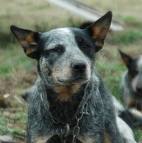 Suffice to say, the dog has a very large family tree these days with over four hundred registered breeds and continually expanding.
Suffice to say, the dog has a very large family tree these days with over four hundred registered breeds and continually expanding.
I would actually be quite intimidated by dogs if they all looked like wolves nowadays, as I have become so accustomed to our new age, user friendly range. Nevertheless, when we consider the massive differences now in physical appearance, ability and behaviour of the range of dog breeds the world over, it seems a bit overwhelming that we could have ‘created’ such diversity albeit through much time and selective breeding processes.
In retrospect, we ourselves seem to have changed in appearance, ability and behaviour perhaps to even an equal degree over the same period of time.
Perhaps the most difficult thing to accept, nonetheless, is the infliction of dysfunction and disease susceptibility that has arisen in a large number of pure breeds in more recent times. I remember as a vet student having to learn a list of breed predispositions for my clinical exams. I can see that the list has grown considerably longer over the last twenty years to an alarming extent. To be fair, some of the genetic tendencies have also reduced as a result of responsible action on the part of dedicated breeders but it seems that inbred traits can be hard to shift. The term ‘hybrid vigour’ possibly came into common usage as an observation of the resilience of crossbred dogs to many genetic diseases of their purebred counterparts. Enter the good old ‘mongrel’ or ‘Heinz variety’ with equal charm and functionality but added vitality and fewer vet bills.
It is not my intention to challenge those who make the decisions about how to genetically manipulate dog breeds. 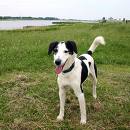 I confess, however, to being very pleased that the practice of tail docking is largely outdated and outlawed in most breeds nowadays, at least in this country. It gives me such joy to see a Rotti with its tail held high and proud or a Boxer still learning to have a tail again. The littlest dogs are the waggiest usually and the Jack Russells have converted their new tails into veritable propellers that almost get them airborne.
I confess, however, to being very pleased that the practice of tail docking is largely outdated and outlawed in most breeds nowadays, at least in this country. It gives me such joy to see a Rotti with its tail held high and proud or a Boxer still learning to have a tail again. The littlest dogs are the waggiest usually and the Jack Russells have converted their new tails into veritable propellers that almost get them airborne.
Despite some controversy over the origins and purpose of many breeds of dogs, it is safe to say that a host of canine variety now exists to augment our domestic bliss the world over.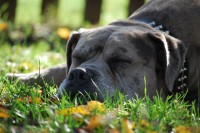 Most breeds of dogs are now found in most countries around the world and a very large number of households have canine inhabitants.
Most breeds of dogs are now found in most countries around the world and a very large number of households have canine inhabitants.
It is impossible for me to imagine human life without dogs. Such is their place in our lives for as long as I can remember.
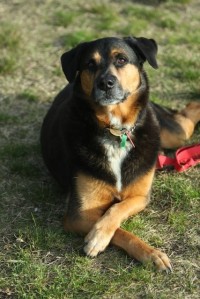
November 10th, 2009 at 6:55 am
Hi Saranyu,
Mr PugAdonis sends his warmest regards.
Cheers,
Stephen, Boris & Freddie.